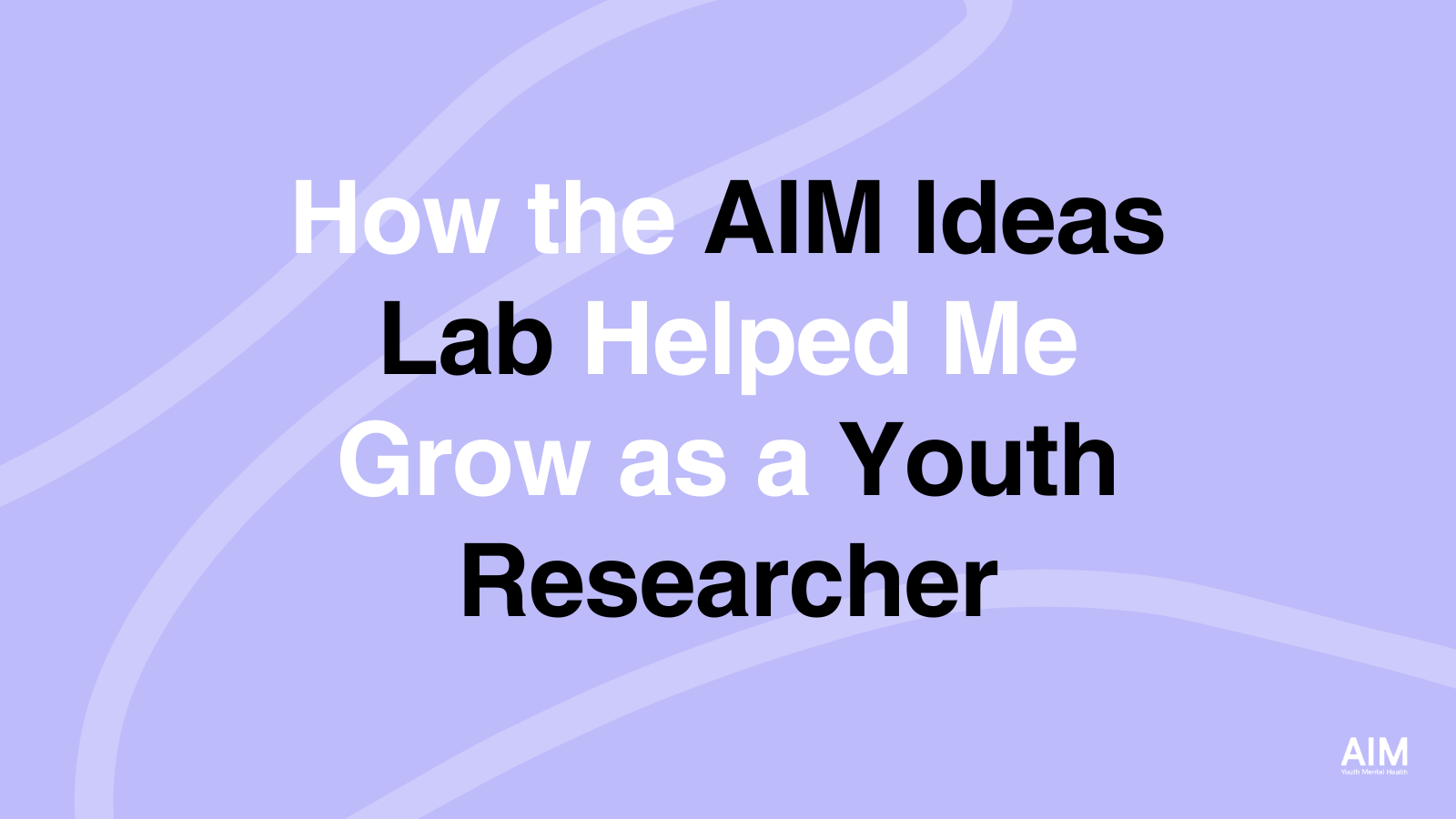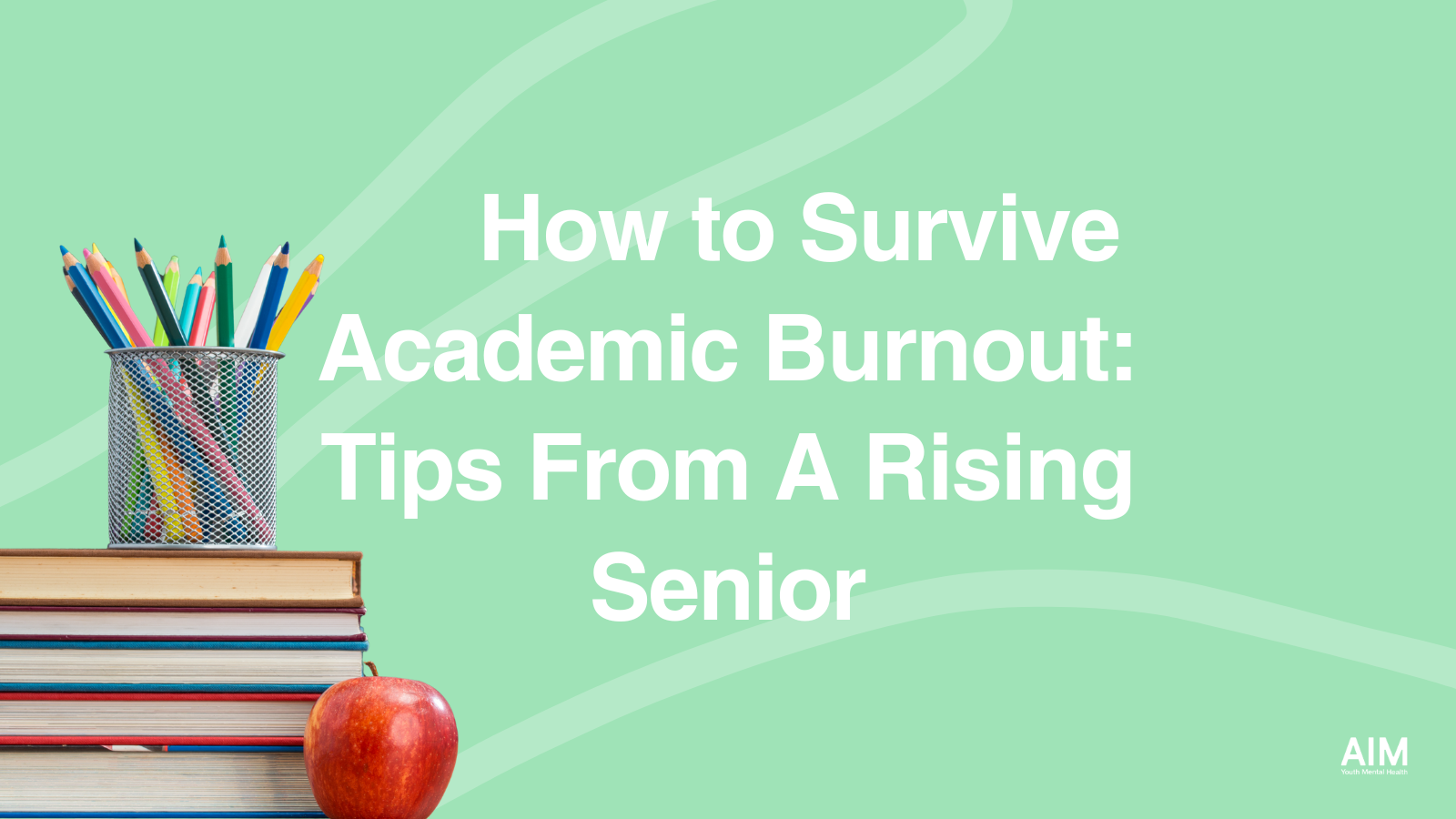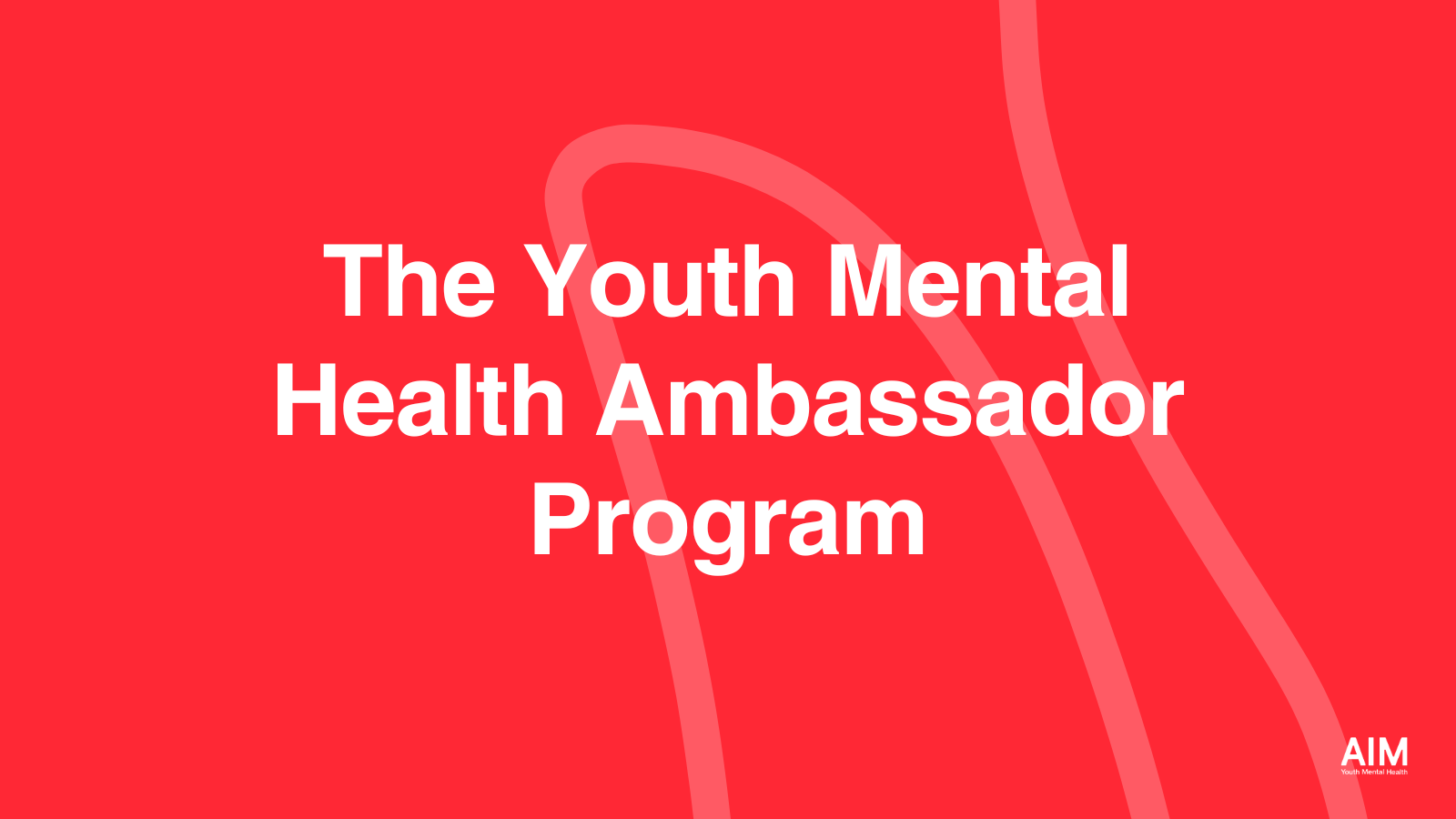The youth of California are self-aware. They know exactly what impacts their mental health (for better and for worse) and just how critical addressing youth mental health is… and yet, many are not fully comfortable seeking help at home or at school—which just so happen to be the two environments whose lack of mental health support are most negatively impacting them.
AIM’s Ideas Lab is a program that synthesizes AIM’s very mission to bridge the gap between youth mental health research and access to care. The Ideas Lab invites high school students across California (specifically within Alameda, Monterey, San Diego, and Santa Clara counties), to take part in a Youth Participatory Action Research project focused on elevating their voices while discovering emerging mental health issues and advocating for programs, research, and public policy to address them. This years’ cohorts shed light on some surprising findings that ultimately, are solutions oriented. The students are asking for exact, actionable changes and providing specific examples of how to best implement them.
The students have spoken… and it’s time we listen.
The Factors Most Negatively Impacting Teen Mental Health Aren’t “Mental Health Issues”
Across Alameda, Monterey, San Diego, and Santa Clara counties, the biggest culprit for negatively impacting youth mental health is not depression or anxiety… It’s academic stress and the pressures teens feel.
Almost 80% of San Diego youth claim that school interferes with their ability to take care of themselves, a sentiment reiterated across California counties. In fact, the top four stressors across all counties were universally academic-pressure related.
Factories Most Negatively Impacting Teen Mental Health Across California
- ACADEMIC STRESS
- LACK OF SLEEP
- PARENTAL/PEER PRESSURE
- LACK OF SCHOOL/LIFE BALANCE
- COMPARISON TO OTHERS/BEAUTY STANDARDS
That’s not to dismiss teens’ very real experiences of anxiety, stress, low self-esteem, depression, eating disorders, loneliness, and more. A majority of students have peers that have experienced these mental health challenges, the most common being stress/burnout and anxiety. And while almost all students find these topics important to discuss, academic structures and pressures continue to cause the most harm, as reported by the students themselves.


This finding alone is profound for our collective approach to preventative and early intervention mental health support. In addition to doing the important work of educating youth about mental health, coping tools, and the fundamentals of mental wellness… There is an earnest need to rewrite our zeitgeist around education and moral value.
Simply providing students with the rhetoric that their worth is measured beyond their academic standing is a sentiment youth are begging to hear.
The students know just how imperative mental health support matters; an overwhelming majority of youth in each report agree that “mental health should be a part of core curriculum and that schools must work to foster a healthier environment for students”. And yet, these factors imply that the swiftest and most profoundly positive impact we can make towards youth mental health starts with cultural change, and the teens agree.

The emphasis of academic success is outshining students’ incentive to seek mental health support. This environment is breeding a lack of help seeking behaviors because while the majority feel comfortable talking about their mental health, they are still not likely to seek support—and are particularly reluctant of school-based resources (as seen consistently across each County).
Plus, with such strong academic pressure within school and home life, there is less time not only for critical self care but also extracurricular activities and hobbies—one of the very factors responsible for a profoundly positive impact on youth mental health (Figure 8, Monterey).
From these findings, it’s clear that our schools are our most impactful resource for systematic change and at this time, the biggest culprits for mental health challenges and lack of help-seeking behaviors.
Education in this country is wildly undervalued. Schools don’t have enough money and teachers are spread extremely thin. The students however, have proposed solutions that start with shifting schools’ approach, not budget.
Some Student Recommendations For School-Based Solutions Include:
- School administrators should ensure the availability of mental health spaces on school grounds, preferably with a no-questions-asked policy, allowing students a designated place to retreat if they require a break.
- Reducing school work or having flexibility with deadlines, would allow students to learn how to find equilibrium between their responsibilities and prioritizing their lives outside of academics.
- Teenagers could access workshops and educational materials aimed at showing students how to practice emotional well-being, stress management techniques and understanding the importance of prioritizing their well-being. These resources could be accessible through wellness centers, physical education classes, school clubs, and extracurricular activities.
- It is recommended that teachers become more involved in fostering an environment where students feel comfortable communicating openly and asking for support.
- There should be open communication from students to teachers about factors (extracurriculars, schoolwork, personal experiences) that may affect their ability to complete assignments on time in order for teachers to provide leniency if necessary.
- Schools should ask students to assess the effectiveness of existing resources and ways to improve them to better suit their needs.
- Schools should openly permit students to take mental health days, refraining from categorizing them solely as sick days. The language and constraints surrounding the act of prioritizing mental well-being has a significant impact on the stigma associated with mental health.
- Counselors in schools should enhance their involvement in mental health support at schools, fostering a safe and inviting atmosphere for students. They should emphasize that, despite being affiliated with the school, they are available to address concerns beyond academics and assure students of the confidentiality of their discussions.
- Host a “What I Wish My Teachers Knew” symposium held by students for teachers, with topics and conversations chosen by the students.
- Foster a supportive environment that validates teens’ concerns and empowers them to prioritize their mental well-being through community-wide awareness campaigns and resource dissemination.
- Shift focus from discussing mental health to implementing concrete measures in schools that allow students dedicated time to prioritize their well-being. This could include incorporating short periods during the school day for completing homework or simply decompressing.
While much of this cultural change starts with opening conversations and making space for destigmatization, students are somewhat comfortable talking about their mental health… what they aren’t comfortable with is seeking help for it.
Why Teens Aren’t Seeking Help & Who They Turn To When They Do
For many, perceived reluctance towards seeking this support within academic settings may stem from “lack of trust, relatability, or contextual understanding of students’ experiences by school staff”. When students do look for support, they find it amongst each other before family or school counselors.
In San Diego County, 78.4% of teens said that they were likely to ask for help if or when they felt like “their issues are valid enough to receive support” or if they knew “their issues won’t add to someone else’s stress” (70.5%).
In Alameda & Santa Clara counties, when asked, “If you were going through a challenging time, how comfortable are you asking for support?” only 13% responded with ‘very comfortable’.
When they do seek support, the majority of youth are turning to their significant other, friends, or “no one”, before seeking help from family guardians or school counselors.
While the majority of respondents are comfortable talking about mental health with their friends, there is a lack of comfortability having these discussions amongst school staff. In fact, a significant percentage expressed there were at least somewhat likely to seek support from “no one”. This prevalence of choosing “no one” contradicts the assumption that students would typically turn to parents, friends, or professionals for assistance.
It also brings up potential distrust in support systems in place since a significant proportion of respondents reported feeling at least somewhat comfortable having conversations about mental health. Family dynamics also play a crucial role with “negative home environments” and “parental pressure” emerging as notable factors negatively affecting teen mental health.
While these findings are at-first disheartening, they are also empowering to each and every adult reading this right now. We can make these changes.
Schools must shift the school culture to promote less emphasis on academic achievements and have more of a focus on wellness and building a more positive environment. Because shifting culture is very difficult, as it requires a systemic and social change, schools can’t just promote a simple “activity”. The focus on wellness has to be a consistent and more integrated effort, starting in elementary school with a consistent presence as a theme into and throughout high school.
Conversations within family units can similarly reflect these themes. In fact, an exact recommendation from the teens share that “adults can support teens’ mental health by focusing on building mutual trust and open communication within their relationships.” Another shares that “parents and trusted adults should prioritize understanding and educating themselves (i.e. Mental Health First Aid) on how to provide unwavering support to children during both favorable and challenging times.”
Some Student Recommendations Every Adult Can Implement Include:
- Encourage regular mental health check-ins among friends and peers to promote mutual support and awareness of each other’s well-being.
- Foster open and non-judgmental dialogue with teens to create a safe space for discussing mental health challenges and seeking support.
- Efforts should be collaborative among school professionals, parents, and students. Facilitating parent meetings and staff mental health training can help educate and support all stakeholders in promoting teen well-being and mental health.
- Introduce comprehensive mental health education programs to increase awareness and provide coping strategies for youth and teens facing academic pressure, parental expectations, and other stressors.
Until youth feel the presence of this support from adults in their community, they will continue to seek it in outside sources that are a bit stickier…
The Truth About Social Media (It’s Nuanced)
Despite initial expectations for more dramatic effects, overall social media seems to have a fairly neutral impact on teen mental health.
There is a nuance to social media that is seemingly playing out in youths lives—where although social media can be a comparison and body image nightmare, there are also pockets of digital communities that bring comfort and community to interests that youth may not be able to find in their immediate physical surroundings. It also acts as a reprieve from academic stressors.
Balancing time on and offline still seems to be important, as scrolling on social media had a more negative impact on teens’ mental health than posting. Notably, social media’s influence seems most pronounced in areas such as body image, productivity, and sleep, where ratings skew towards the negative end of the spectrum. Conversely, aspects like creativity, access to information, and personal relationships receive higher ratings, indicating more positive impacts. It appears that active engagement with social media, rather than passive scrolling, contributes to these positive effects.
Youth recommendations from the San Diego cohort further confirm this: “Peer support programs and online chat groups are examples of supportive and inclusive environments where teens can openly discuss mental health challenges helping normalize the conversation, and reducing the fear of judgment.”
While comparison to others is still one of the top contenders for negative mental health impact, having conversations around mental health offline could help youth to strategically seek community digitally with a balance.
In Alameda & Santa Clara counties, the top two factors that positively impact teen self-esteem are socializing with classmates and accessing mental health resources… both of which are made readily accessible in a digital environment.
While digital communities aimed at empowerment, education, and fostering safe spaces are extremely valuable… There remains much work to do in the quotidian, daily lives of our youth that has the potential to profoundly shift the pressures, stress, and self worth our teens feel.
So… Where To Begin?
Each and every person reading this has a role to play. We all have a voice and can create ripple effects in our own communities to help foster an environment of supporting mental health and encouraging seeking help.
There are many ways to start this journey, some include:
- Showcase that self worth and success for youth is larger than academic standing
- Check in with the youth in your life about how they are really doing
- Take Youth Mental Health First Aid—as recommended by the youth themselves
- Educate yourself on mental health issues by reading blogs like ours, listening to podcasts, and staying up-to-date on latest mental health research
- Talk about what you learn with others in your lives, particularly youth
- Lead by example by seeking help when you need it, engaging in self-care, and showcasing prioritizing your mental health (especially if you are a teacher or parent/guardian)
- Encourage youth to reach out to their friends, counselors, therapists, or trusted support system
- Send this article to a friend, your child’s school, or parent group to see how you can work in community to support youth mental health
- Donate to AIM—to keep empowering youth to find their own solutions, value their voices, and see changes made based on their recommendations
There is much to be done to make positive shifts for our youth’s mental health… Luckily, they are changes we can make. Let’s make them together.
For more information about AIM’s Ideas Lab program and to read the full report from each participating County, click here.
____________________________________
About the Author
Meadowlark Monaghan (she/hers) is a consultant using her knowledge gained as a mental health professional to act as a liaison between brands, creators, + online communities with the field of psychology and mental health. She also co-hosts the personal development podcast, Thoughts May Vary. Her work has been seen with Madhappy, Local Optimist, The Mayfair Group, Lonely Ghost, AIM Youth Mental Health, NAMI San Diego and more.





